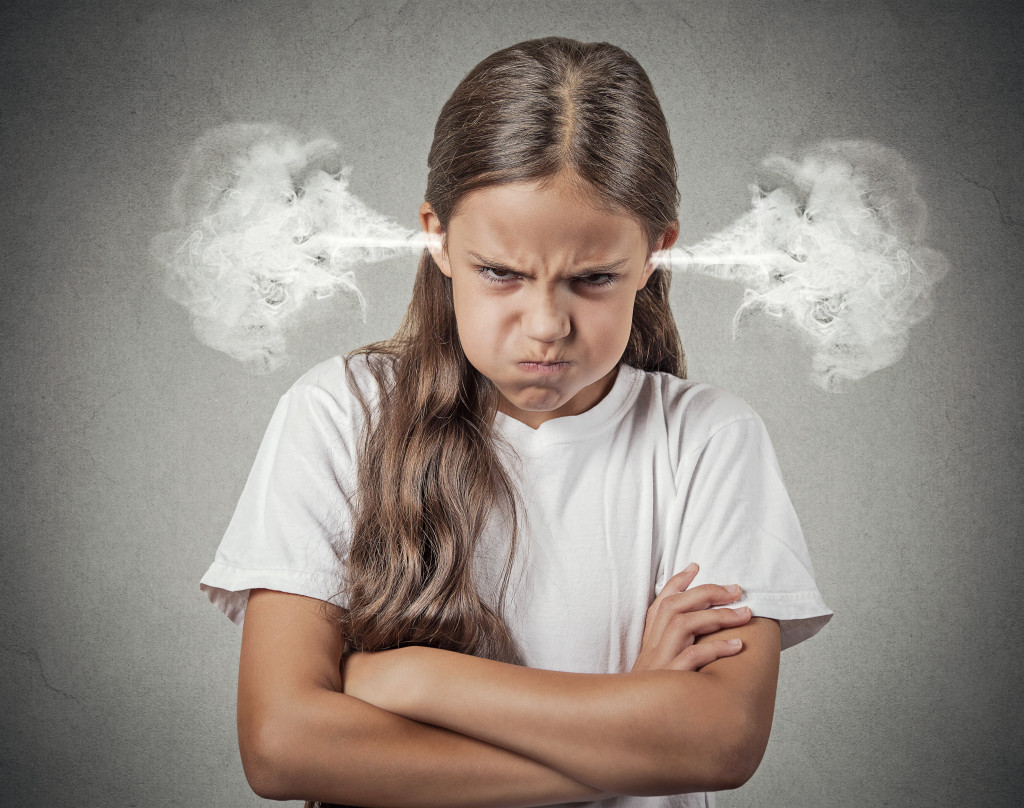How to Deal with and Diffuse an Angry Child
Handling an angry child can be frustrating, tiring and just plain confusing. As adults, we have developed coping mechanisms to control our emotions, specifically anger. Now it’s time to teach our children how to manage their anger. More often than not when our children become angry, it stirs up our own emotions of anger which translates into an even larger mess. Sadly, most people were not taught coping skills in childhood when it comes to this frustrating emotion. There is good news! You can start to work with your child during their angry moments to diffuse the situation safely.
How to Diffuse an Angry Child
The first step, is to understand that an angry child doesn’t necessarily mean a bad child. You need to work to acknowledge that this is an emotion stemming from something in their environment. Once you are able to step back and realize this emotion is completely normal, you can then work to develop strategies to ensure your child’s safety is not being hindered during their angry outburst. Now that you have taken a moment to accept that this is simply an emotional response from a scenario, and ensured your child is out of harm’s way; you need to take a constructive approach to teach your child how to move forward.
Accept your child’s emotions, rather than scolding your child for their feelings. Let your angry child know that you understand how they feel and that you are there to help them through this. When you take the time to let your child know you understand that they are feeling angry rather than yelling at them, it helps to release some of that anger. Your child will soon feel a slight level of comfort knowing that their parent understands and is there to assist.
Have your child do an activity that calms them, such as coloring or petting a family pet. Redirecting your child to a calming activity will help distinguish the angry firestorm. This calming activity will serve a dual purpose of putting the child into a more relaxed state of mind, and opening the child up to conversing about what made them angry in the first place. When your child is calm, analyzing the scenario that caused the anger is easily addressed. Allow your child to vent to you during this time, so you can get a broader scope of what caused this outburst.
While you may have compassion regarding your child’s angry moment, intolerable behavior must always be addressed. Mildly tolerable behaviors can be consistently ignored. The key to handling an angry child is to always give a consistent consequence for intolerable behavior. If hitting is unacceptable in your home you must give a consequence whether the child is having an angry outburst or not. If the child has tossed something on the ground but isn’t causing a scenario that may harm others, then you may consistently choose to ignore this type of behavior during an angry outburst. Obviously what you define as acceptable orintolerable would be based upon your own household rules.
Once you have taken all of the steps to get your child to calm, open up and discuss their anger, you can then work towards a parental discussion of how they can work to cool their jets the next time around. Anger will strike most all human beings at some point in their lives, whether it is a child or an adult, the key to parenthood is to take this moment to encourage healthy coping mechanisms. When a parent takes the time to teach their child coping skills for angry emotions, they are creating a chance to teach the life lesson of handling emotions, something we all can benefit from.
